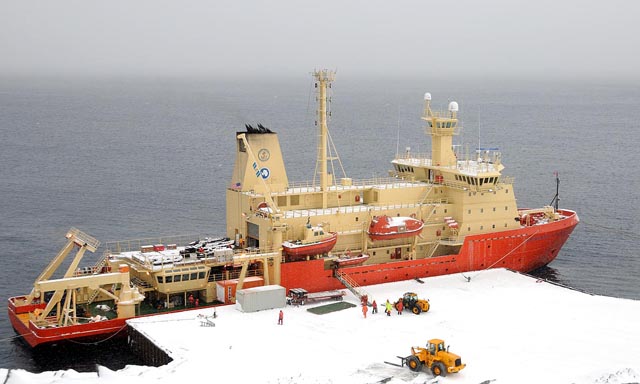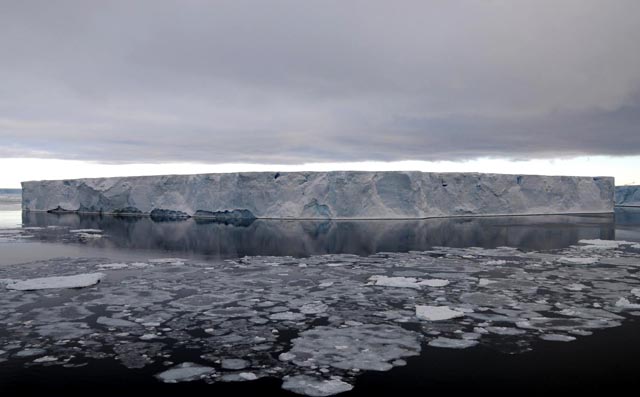Page 2/2 - Posted July 9, 2010
OtolithsThe researchers are keenly interested in figuring out where the Charcot and Avian silverfish populations come from. That job largely falls to Julian Ashford Ashford employs a technique called Inductively Coupled Plasma Mass Spectrometry, or ICPMS, that can not only tell him about where the fish were spawned, but what environmental conditions existed from year-to-year during the animal’s lifetime. All he and his team need for the analysis is an otolith — a small ear bone. 
Photo Credit: Penguinscience.com
Fish otoliths. The small, rounded ones are from Antarctic silverfish.
The otolith is made mainly of calcium carbonate, like corals, which is different than most bones of the body, which are made of calcium phosphate. Juvenile fish lay down new layers of bone every day, while older fish create new layers every year, corresponding to winter and summer. Ashford said scientists can count the rings of an otolith to determine the fish’s age, just like a tree ring. Trace elements found in the calcium matrix, on the other hand, can offer clues to the kind of conditions that existed throughout the critter’s lifetime. For example, the chemical element strontium can indicate water temperature. “What you’re getting is a kind of environmental record that’s related to chronology, and the fish are constantly putting that down throughout their life history,” Ashford said. 
Photo Credit: Joseph Torres
The research vessel Nathaniel B. Palmer tied up at the pier of Rothera Research Station off the Antarctic Peninsula.
The researchers can follow the chemical tracers in the otoliths like breadcrumbs, mapping the fish’s route through different parts of the water column and different regions. So, for example, separate populations of silverfish that were spawned in different areas will have a different signature from each other. “They’ll be recording water peculiar to their spawning area,” Ashford said. “It’s terribly important to know what proportion of fish you have in a particular area is self-recruiting from a local population and how many are migrating in from other populations.” Common sourceAshford said he suspects the Charcot and Marguerite populations share a common source based on the demographics. The chemistry work from the otoliths will confirm those suspicions. Previous research has shown that krill are also dominated by certain age classes, likely related to environmental cycles, particularly sea ice. “It may be that similar events are driving the Pleuragramma,” Ashford noted. Another team of collaborators from Italy collected tissue samples at the same time Ashford extracted his otolith specimens. The Italians will analyze the silverfish’s genetic characteristics and compare them to other silverfish from around the Southern Ocean, according to Torres. “We have two lines of evidence being worked up now to see where they came from and who they are most closely related to. That’s a pretty nifty thing,” he said. The results from the cruise will establish an important baseline for researchers to track the future progress of the Antarctic silverfish along the Antarctic Peninsula, Torres added. “When this fish is missing from the smorgasbord for penguins and other seabirds, [the predators] tend to decline in numbers,” he said. “The silverfish is the only Antarctic coastal pelagic fish that is accessible to all predators. It is extremely important.” NSF-funded research in this story: Joseph Torres, University of South Florida, Award No. 0741348 |



For USAP Participants |
For The Public |
For Researchers and EducatorsContact UsNational Science FoundationOffice of Polar Programs Geosciences Directorate 2415 Eisenhower Avenue, Suite W7100 Alexandria, VA 22314 Sign up for the NSF Office of Polar Programs newsletter and events. Feedback Form |



